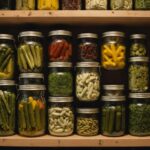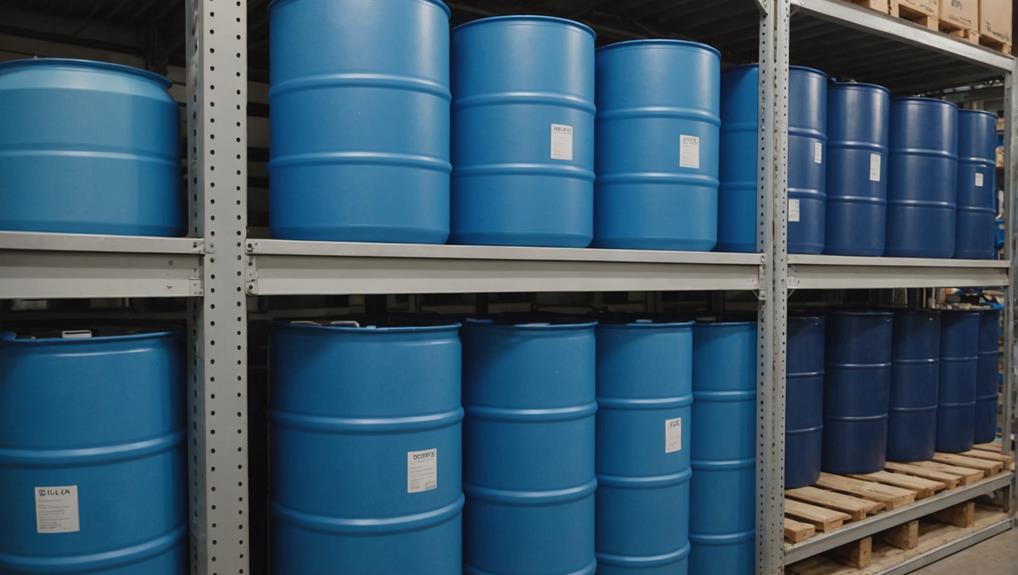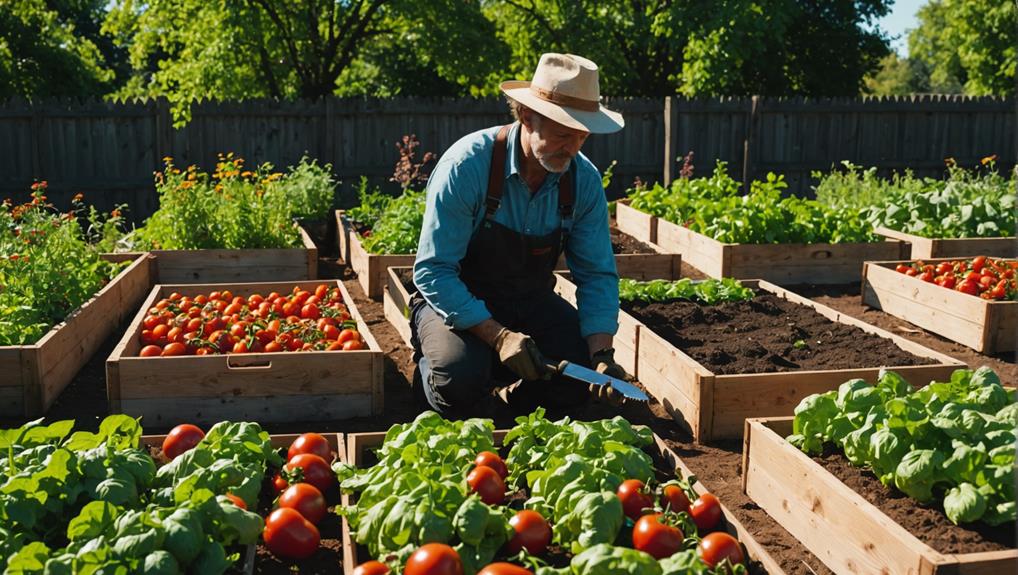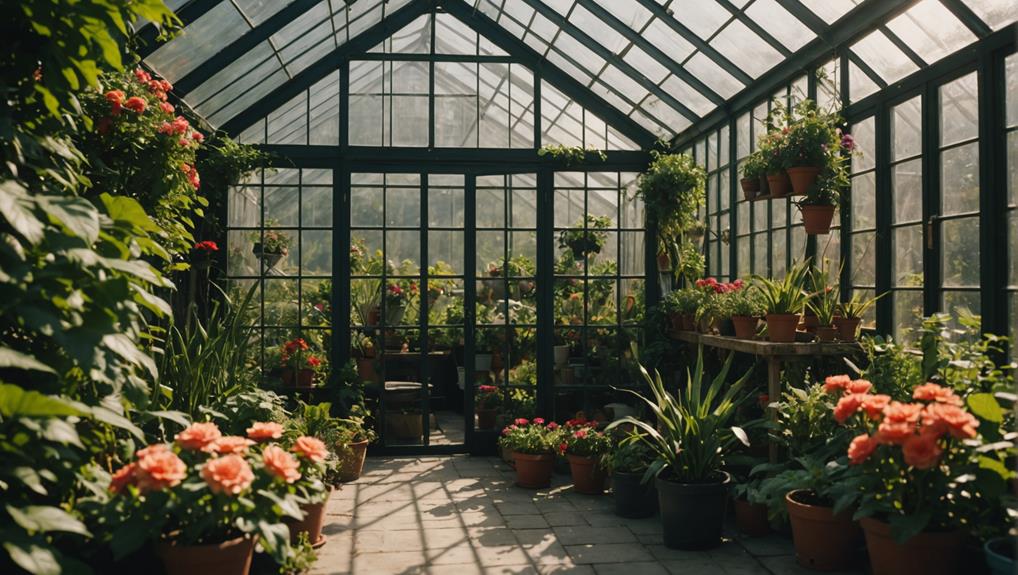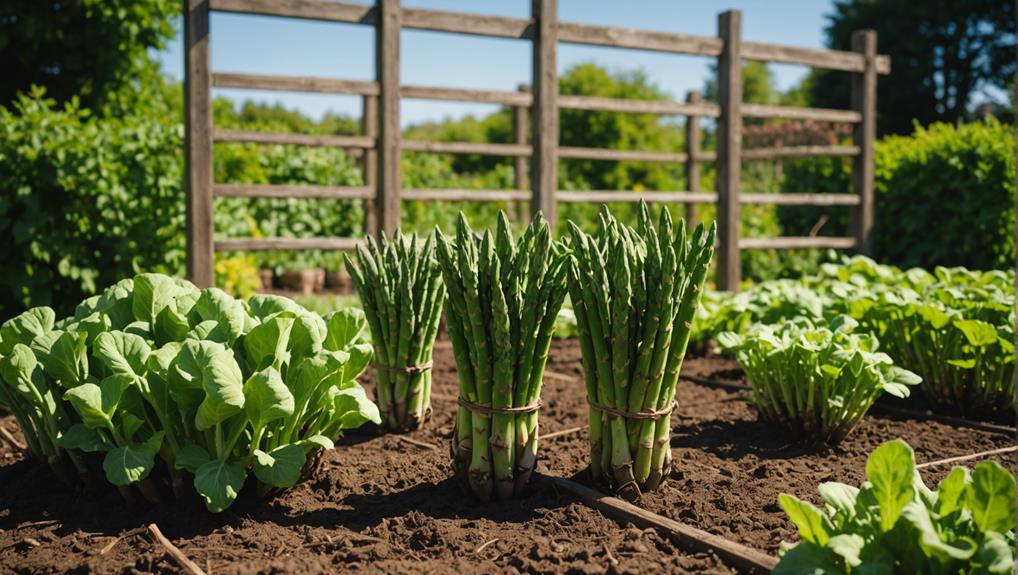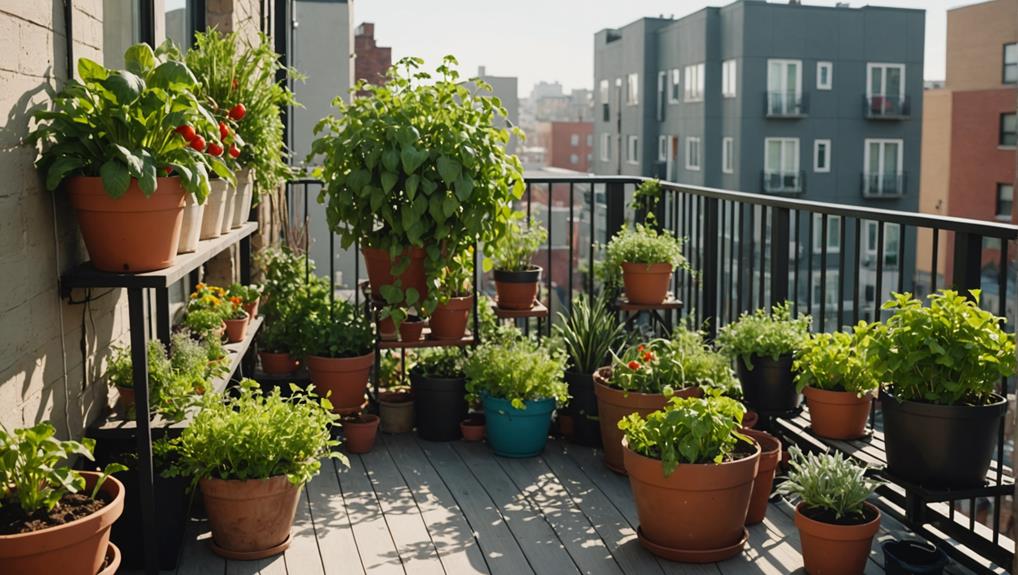As an Amazon Associate I earn from qualifying purchases.
When preparing for emergencies, having a reliable water storage solution is non-negotiable. You'll need containers that not only hold enough water but also keep it uncontaminated. Whether you're considering the rugged Scepter Military Can or the versatile WaterBrick, each option has its strengths and weaknesses. Choosing the right mix of containers can be tricky, balancing between durability, capacity, and cost. Wondering how to make the best choice and what pitfalls to avoid? Let's explore the best practices and essential tips for selecting your water storage containers.
Importance of Emergency Water Storage
Ensuring you have an adequate emergency water supply is essential for your survival during disasters. You need to store enough water to cover at least a minimum two-week supply. That means at least 15 gallons of water per person, calculated as one gallon per person per day. This isn't just for drinking; it also covers basic sanitation needs.
Your preparedness plan should include reliable water containers and water storage tanks to secure your emergency water storage.
Most Americans have less than 12 hours of water supply on hand, making the need for proper storage even more urgent. Historical disasters have repeatedly shown that emergency response times can be delayed, leaving you without access to clean drinking water for extended periods.
To avoid this, focus on contamination prevention by using food-grade water containers designed to keep your water supply safe.
Top Container Choices
When choosing the best water storage containers, you'll need to evaluate durability and capacity, cost and convenience, as well as portability and storage.
The Reliance Rhino, Scepter Military Can, Reliance Aqua-Tainer, and WaterBrick each offer unique benefits that cater to different needs.
Let's compare these options to help you decide which one suits your emergency preparedness plan.
Durability and Capacity
Selecting the right water storage containers hinges on balancing durability and capacity to meet your specific needs. When preparing for emergencies, you'll want containers that can withstand rough conditions while offering sufficient storage. Here are some top choices:
- Scepter 5 Gallon Military Water Can: Known for military-grade durability, this container is perfect for long-term reliability in emergency preparedness.
- Reliance Rhino 5.5 Gallon: With its toughness and stackability, this is a practical choice for most households looking for a balance between durability and capacity.
- WaterBrick 3.5 Gallon: Although more expensive, this container features high durability and ultra-stackability, making it ideal for maximizing storage efficiency.
For a well-rounded water storage plan, consider mixing different types. A recommended mix for two people includes two Scepter Military Cans and two Reliance Rhinos, providing a total of 21 gallons.
This combination guarantees you have containers that offer both durability and adequate capacity, essential for long-term emergency preparedness. By carefully selecting your water storage containers, you'll be well-prepared for any situation.
Cost and Convenience
Balancing durability and capacity with cost and convenience is key to choosing the right water storage containers for emergency preparedness. As a prepper, you need to evaluate the cost-effective options that don't compromise on durability. Let's look at some of the best water storage containers available.
| Container | Cost | Features |
|---|---|---|
| Reliance Rhino 5.5 Gal | $20 | Tough, stackable |
| Scepter 5 Gal Military Can | $50 | Military-grade, long-term use |
| Reliance Aqua-Tainer 7 Gal | $20 | Built-in spigot, budget-friendly |
The Reliance Rhino 5.5 Gal container offers a fantastic balance of toughness and stackability for around $20. It's ideal for most households, providing a reliable option without breaking the bank. For those looking for military-grade durability, the Scepter 5 Gal Military Water Can is priced at $50 and designed for long-term use, making it a reliable choice for serious preppers.
For budget-conscious preppers, the Reliance Aqua-Tainer 7 Gal is a great pick at around $20. It includes a built-in spigot, though it's less durable than other choices. Mixing a few durable containers like the Reliance Rhino and Aqua-Tainer can provide adequate water storage while balancing your budget and needs.
Portability and Storage
Finding the right balance between portability and storage is vital when choosing water containers for emergency preparedness. You need containers that aren't only durable and have the right capacity but are also easy to move and store.
Here are some top choices to evaluate:
- Reliance Rhino 5.5 Gal: These containers are tough and stackable, making them ideal for most households. They're priced around $20 and offer a durable solution for your water storage needs.
- Scepter 5 Gal Military Water Can: Known for its military-grade durability, this container costs about $50. It's perfect for long-term use in emergency situations, guaranteeing your preparedness plan is robust.
- Reliance Aqua-Tainer 7 Gal: At approximately $20, this container offers a good mix of capacity and cost-effectiveness. However, it may be less durable than other options, so assess your specific needs before choosing.
Balancing capacity, weight, and durability is vital to guarantee your water storage meets your emergency preparedness needs effectively.
Selection Criteria for Containers
Choosing the right water storage containers is vital to guaranteeing your emergency supply is safe, accessible, and efficient. Start by considering the capacity of the containers; aim for at least 15 gallons per person for a two-week emergency supply. The material is important too. High-density polyethylene (HDPE) and stainless steel are top choices due to their durability and non-leaching properties.
Transportability is another key factor. Remember, water weighs about 8 pounds per gallon, so full containers can get heavy quickly. Opt for containers that are manageable in weight. Stackable containers are beneficial if you're working with limited space, as they allow you to store more water without sacrificing accessibility.
Here's a quick comparison to help visualize:
| Criteria | Considerations |
|---|---|
| Capacity | At least 15 gallons per person |
| Material | HDPE or stainless steel for durability |
| Transportability | Manageable weight when full |
| Stackable | Maximizes storage space |
Don't forget to research brand reliability and user reviews. Trusted brands typically offer better durability and safety during emergencies than cheaper alternatives. By carefully selecting your water storage containers, you'll guarantee your emergency supply is both practical and reliable.
Suggested Container Mixes
When choosing your water storage containers, aim for a mix that balances durability and affordability.
For a two-person household, consider combining durable Scepter Military Cans with stackable Reliance Rhinos and a spacious Reliance Aqua-Tainer.
If you're on a budget, you can still achieve a robust setup with a mix of Reliance Rhinos and Aqua-Tainers.
Ideal Two-Person Mix
How do you create the perfect water storage mix for two people?
For an ideal two-person mix, focus on a combination of containers that offer durability, capacity, and flexible usage for emergency water storage. Aim for around 28 gallons to guarantee you have enough for a two-week period, with each person getting roughly 2 gallons per day.
Here's a suggested mix that balances sturdiness, portability, and capacity:
- Two Scepter Military Cans: These provide 10 gallons total and are known for their durability, making them ideal for long-term storage.
- Two Reliance Rhino Containers: Offering 11 gallons total, these containers are a great mix of portability and sturdiness.
This combination guarantees you're prepared for emergencies, providing both the sturdiness and capacity needed for flexible usage.
The Scepter Military Cans will serve as your primary, long-term storage solution, while the Reliance Rhino and Aqua-Tainer containers offer easier transport options if you need to move your water supply.
This mix guarantees you're covered for various scenarios, making your water storage strategy both practical and adaptable.
Best Budget Options
For a cost-effective yet reliable water storage solution, focus on mixing Reliance Rhino containers with Reliance Aqua-Tainers to guarantee both durability and capacity. This combination provides a balanced and budget-friendly way to enhance your emergency preparedness. The Reliance Aqua-Tainer, priced around $20, features a built-in spigot, making it user-friendly for both outdoor activities and stationary storage. Meanwhile, the Reliance Rhino containers offer sturdy transport, making them ideal for mobile situations.
A suggested mix could look like this:
| Container Type | Quantity | Total Capacity |
|---|---|---|
| Reliance Rhino Containers | 2 | 11 gallons |
| Reliance Aqua-Tainers | 3 | 21 gallons |
| Scepter Military Can | 1 | 5 gallons |
Durability and Capacity
Selecting the right water storage containers involves balancing durability and capacity to guarantee you're well-prepared for any emergency. For two people, you should aim for at least 30 gallons to last two weeks.
Here are some suggested container mixes:
- Scepter Military Water Cans: These are exceptional in durability and reliability, holding 10 gallons total for two cans. Ideal for long-term storage.
- Reliance Rhino Containers: With a robust build, two of these offer 11 gallons total. They're a great middle-ground option combining quality and capacity.
- Reliance Aqua-Tainer: A more budget-friendly and lightweight option, one of these holds 7 gallons. Useful for emergency situations where mobility is necessary.
Risks of Cheap Containers
Cheap water storage containers often crack easily, leading to frequent replacements and potentially higher long-term costs than initially anticipated.
When using cheap containers, you're not just risking your wallet but also the safety and reliability of your emergency water supply. Poor-quality materials can fail when you need them most, resulting in leaks or contamination. During emergencies, the last thing you want is to discover that your stored water is undrinkable.
Cheap containers often lack the guarantee of food-grade materials, increasing the risk of harmful chemicals leaching into your water. This can pose significant health risks, especially in a survival situation where clean water is paramount. The reliability of your storage solutions becomes questionable, making it essential to take into account the investment in higher-quality options.
Maintenance and sanitation become more labor-intensive with poor-quality containers, as they're more susceptible to damage and require frequent inspections. While it might seem cost-effective initially, the ongoing effort and potential risks make cheap containers a less appealing choice.
Maintenance of Water Containers
Regularly cleaning and sanitizing your water storage containers is essential to confirm the safety of your drinking water. To prevent contamination, start by using soap and water or a vinegar solution to properly clean each container before filling. This routine guarantees that no harmful bacteria or residues compromise your stored water.
To maintain the integrity of your containers and water quality, you should:
- Inspect containers periodically: Look for any cracks, leaks, or signs of wear. Damaged containers can lead to water loss or contamination during emergencies.
- Rotate stored water: Change the water every six months to one year to maintain freshness and prevent off-tastes, especially in plastic containers.
- Use food-grade materials: Opt for High-Density Polyethylene (HDPE) or stainless steel to avoid chemical leaching and confirm safe drinking water.
Water Treatment and Safety
After confirming your containers are properly maintained, it's important to treat the water itself to guarantee its safety for long-term storage. Water treatment is essential to eliminate pathogens and prevent contamination. Use chemical treatments like chlorine bleach or Water Preserver Concentrate to disinfect your stored water. These methods are effective and make certain that your water remains safe for consumption over extended periods.
| Method | Purpose | Frequency |
|---|---|---|
| Chemical Treatments | Disinfect stored water | Every 6-12 months |
| Regular Testing | Check for contaminants | Every 3-6 months |
| Inspect Containers | Identify cracks/leaks | Monthly |
| Sanitize Containers | Clean before refilling | Every use |
| Emergency Filters | Remove pathogens from sources | As needed |
Regular testing of your stored water is vital. Despite proper storage, contaminants can develop over time. Test your water every 3-6 months to ascertain its quality. Additionally, inspect containers regularly for cracks or leaks to prevent contamination or loss.
Before filling containers, sanitize them using solutions like vinegar or soap and water. This step helps prevent initial contamination. In case of supply shortages, emergency filters like LifeStraw or Katadyn can provide additional safety by removing pathogens from natural water sources. Following these purification methods guarantees your stored water remains safe and drinkable.
Conclusion
In summary, guaranteeing you have a reliable water storage solution is essential for any prepper.
By choosing durable, food-grade containers like the Scepter Military Can, Reliance Rhino, Aqua-Tainer, and WaterBrick, you'll be prepared for emergencies.
Remember to balance your storage options, avoid cheap containers, and maintain them properly.
With these steps, you'll safeguard your water supply and guarantee access to clean, safe water when you need it most.
Stay prepared and stay safe!
As an Amazon Associate I earn from qualifying purchases.





